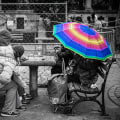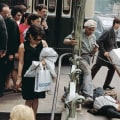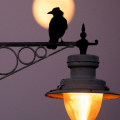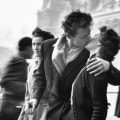As an urban dweller, you may find yourself in search of a lighting solution that is both stylish and practical. Artificial light can provide just that – and when used properly, it can transform any room into a warm and inviting space. In this article, we'll explore the tips and techniques of using artificial light in urban settings. From selecting the right fixtures to considering the best placement, this guide will provide you with the tools you need to create a beautiful and functional lighting design.
Lighting Techniques
When it comes to lighting techniques for urban photography, there are a few key concepts that can help you create amazing images.The first is to use natural light. Utilizing the sunlight or moonlight that is available in your environment can help you achieve beautiful lighting effects. You can also use artificial light sources such as flashlights or studio lights to fill in any shadows or create interesting effects. Another technique to consider is using reflections from nearby surfaces to bounce light back onto your subject.
This can help give your images an extra pop of color and contrast. Additionally, you can use colored gels or filters to add a unique, dramatic effect to your photos. Finally, you may want to consider using silhouette photography in urban settings. This technique involves positioning the camera so that the light source is behind the subject, creating a silhouette.
This can be a great way to capture the city skyline and create a stunning image.
Types of Artificial Light
Incandescent Bulbs - Incandescent bulbs are traditional, tungsten-based bulbs that emit warm, yellowish light. They are inexpensive and widely available, making them the easiest to find and the most affordable type of artificial light. The downside is that they have a shorter lifespan and can be hot to the touch, making them less suitable for photography.Fluorescent Bulbs - Fluorescent bulbs produce a cooler, brighter light than incandescent bulbs and can last up to 10 times longer. They are more energy efficient, but they are not as widely available and can be more expensive than incandescent bulbs. Additionally, they may flicker or create a hum that can be distracting during photography.
LED Lights
- LED lights are the most energy efficient type of artificial light and produce a very bright, white light that is perfect for photography. They also have a much longer lifespan than traditional incandescent or fluorescent bulbs and are less likely to flicker or hum.However, LED lights can be expensive and may require additional accessories like dimmers or color filters to get the desired effect.
Preparing for a Shoot
Preparing for a shoot is key to capturing the perfect image. To get the most out of using artificial light in an urban setting, you must know how to set up a scene and adjust your camera settings accordingly. It is important to also consider the type of light source that works best for the photo. To begin, carefully choose your location.Consider the time of day you will be shooting and the available natural light. If you plan to take photos during the day, look for areas with diffused light, such as under trees or near open windows. If you plan to shoot at night, look for areas with minimal light pollution or reflective surfaces that can be used to capture light. Once you have chosen your location, set up your camera. Adjust the ISO, shutter speed, and aperture settings based on the type of scene you wish to capture.
For example, if you are looking to capture motion, then use a slower shutter speed and a wider aperture. If you want to capture more detail, then use a higher ISO and a narrower aperture. Finally, choose the type of artificial light that works best for the photo. If you are shooting in low-light conditions, a flash may be necessary to provide sufficient illumination. If you are shooting in brighter conditions, consider using a continuous light source such as LED lights or strobes.
Experiment with different types of artificial light sources to find what works best for your photo.
Post-Processing
Post-processing your photos taken with artificial light is essential to ensure the best possible result. There are a few techniques that you can use to enhance your images and create the perfect shot.Adjusting Contrast and Color Tones
When using artificial light, you may find that the colors in your photos look a bit off or lack contrast. This is where adjusting contrast and color tones comes in. You can use post-processing tools like Adobe Photoshop or Lightroom to tweak the colors and contrast of your images to make them look more vibrant and dynamic.Adding Highlights and Shadows
Highlights and shadows can be used to add depth and dimension to your photos.You can use post-processing tools to add highlights and shadows to your images to give them a more three-dimensional look. This can help to make your photos stand out from the crowd.
Creating Vignettes
Vignetting is a great way to draw attention to the main subject of your photo. It is a post-processing technique that involves darkening the edges of your image, which creates a more focused look. You can use post-processing tools to create vignettes and make your photos more visually appealing.Blurring Backgrounds
Blurring the background of your photos can be a great way to draw attention to the main subject.You can use post-processing tools like Photoshop or Lightroom to blur the backgrounds of your photos for a more professional look. This technique can also be used to help emphasize certain elements in your photo. By using these post-processing techniques, you will be able to take full advantage of artificial light and create stunning photos in urban settings. With a little practice, you'll soon be creating masterpieces with artificial light!In conclusion, when taking photos in urban settings, it’s important to know how to properly use artificial light. With the right types of artificial light, preparation for the shoot, lighting techniques, and post-processing, you’ll be able to create stunning images with ease. By following these tips and techniques for using artificial light in urban photography, you can create stunning images and take your photography to the next level.








